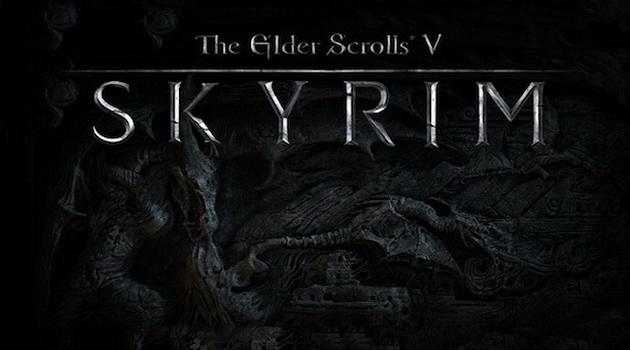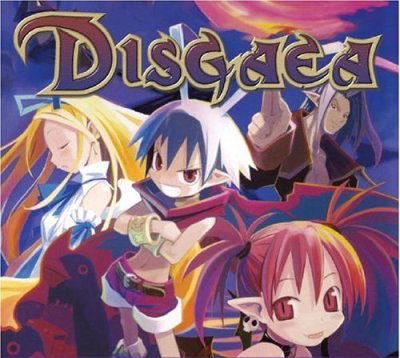On the Edge with Edmund
Welcome back one and all to On the Edge with Edmund! In our last issue, we explored the differences in characters in JRPGs and WRPGs. This issue, however, we are going to delve into something more detailed: plotlines!
As any dedicated gamer knows, if a game doesn’t have a good plotline, it’s not going to be much fun at all, and it won’t receive the tens of hours of play that your prized favourite might. With regards to people’s tastes, JRPGs and WRPGs have generally taken different approaches to this issue, the same approaches that we will be discussing today!

Let’s once again begin with WRPGs. The typical approach to plot in WRPGs is not linear, and frankly, a bit unplotlike. This isn’t a bad thing however, as it gives them a rather open feel with loads of side-quests aside from the main story. A great example of this practice is the Elder Scrolls series. Whether you are playing Oblivion, Skyrim, or the older Daggerfall, chances are that you will spend very little time on the actual story as compared to the seemingly infinite number of side quests available to help the Thieves’ Guild, become the king of town, or just help a widow in a town who has lost her child in the market. (Note, this quest may or may not exist, but it provides a fairly realistic example of a side quest).

Another fairly typical aspect of plot in WRPGs is that the plot itself is much more action based. It is not uncommon to find yourself embroiled in an epic battle while simultaneously learning about how the plot is advancing. A great example of this in a WRPG is the Borderlands series. While fighting any number of bosses in the game, you will hear them elaborate about the situation that brings you to them as well as taunt you mercilessly until you finally bring them down. This provides a more immersive experience and makes you believe that perhaps those evil bosses know what you’re doing, and actually change their dialogue based on your actions in the story thus far. (Muahahaha?)
While these aspects are not guaranteed in each of the WRPGs you play, they certainly hold true in the long run, and the same is true of JRPGs. The genre as a whole has some very defining characteristics when it comes to plotlines.
 With regards to the amount of action in the plot, JRPGs definitely tend to be much more relaxed in plotlines. This doesn’t mean that there is not action, or insane plot twists, but in general, plot advancement tends to take place in chunks separate from the story. A great example of this are the typically Japanese SRPGs, in which everything is turn based and plot advancement only occurs after a battle is finished. The Disgaea series by Nippon Ichi is the epitome of this, with each plot battle listed as 7-1 or 8-3, and a short cutscene before or after the battle introduces any new characters, concepts, or important details.
With regards to the amount of action in the plot, JRPGs definitely tend to be much more relaxed in plotlines. This doesn’t mean that there is not action, or insane plot twists, but in general, plot advancement tends to take place in chunks separate from the story. A great example of this are the typically Japanese SRPGs, in which everything is turn based and plot advancement only occurs after a battle is finished. The Disgaea series by Nippon Ichi is the epitome of this, with each plot battle listed as 7-1 or 8-3, and a short cutscene before or after the battle introduces any new characters, concepts, or important details.
 Another fairly typical aspect of the JRPG is the aspect of saving a damsel in distress. In WRPGs, the main goal is often to depose an evil dictator, or suppress a dangerous government, but in JRPGs, more often than not, some woman is in danger and you NEED to save her for the world to survive. The most obvious example of this is the Zelda series, which is named after the princess who somehow ends up captured by Ganondorf each and every title in the series. You play Link (or whatever name you choose; I often name him Zelda for the lulz), who is perpetually young and very much in love with adventure and the Princess Zelda. His whole goal in life is to save the princess, despite the sheer amount of dungeons and effort he must go through to save her. Other examples of this plot design could be the Final Fantasy series, and in an odd fashion, the Harvest Moon series, in which you farm and make money in the hopes of snagging a wife (the Harvest Goddess herself is the ultimate win in that category).
Another fairly typical aspect of the JRPG is the aspect of saving a damsel in distress. In WRPGs, the main goal is often to depose an evil dictator, or suppress a dangerous government, but in JRPGs, more often than not, some woman is in danger and you NEED to save her for the world to survive. The most obvious example of this is the Zelda series, which is named after the princess who somehow ends up captured by Ganondorf each and every title in the series. You play Link (or whatever name you choose; I often name him Zelda for the lulz), who is perpetually young and very much in love with adventure and the Princess Zelda. His whole goal in life is to save the princess, despite the sheer amount of dungeons and effort he must go through to save her. Other examples of this plot design could be the Final Fantasy series, and in an odd fashion, the Harvest Moon series, in which you farm and make money in the hopes of snagging a wife (the Harvest Goddess herself is the ultimate win in that category).
As you can see, RPGs of all types have plots of different types. Each of these have their pros and cons, and every person may have one type that they enjoy more than the others. Hopefully, I’ve offered some insight into the type of plots of the JRPGs and WRPGs, and if you’re especially inspired, I encourage you to go out there and try a bit of both and formulate your own opinions! Until next time, Edmund signing off!






